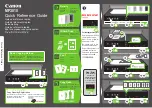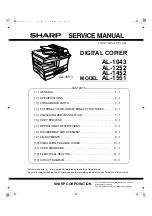
D C
Figure 2-10
During
operation, the toner attracted to
the drum by the work of the surface potential of the
drum as well as the developing bias (at time of
positive component),
and it
turns the electrostatic
latent image to a visible image. The
toner
by the surface potential ofthe drum and the
developing bias (at time of negative component).
A DC bias affects copydensity; a larger
approaching OV,
the density but, at the
time, tends to cause fogging.
7 Step 5 Transfer
c o r o n a
4
Figure 2-11
In this step, a negative corona applied to the
of the
paper so as to attract the positively
charged toner to the paper.
2 - 4
8. Step Separation
Figure 2-12
In this step, the paper separated from the drum
making use of the rigidity of the
paper. Thin
paper, with
rigidity, however, tends to remain
with the drum; to prevent
a condition,
the static eliminator charged to a positive potential
to facilitate separation by weakening the static
attraction between the drum and
paper.
9. Step7
Fixing
,
,
Figure 2-13
In this step, the paper carrying a transfer image
moves between two heated rollers, and the transfer
image fixed to the paper.
To prevent jams and toner offset, the upper roller
remains
with the oil application roller
impregnated with
oil.
6
C A N O N I N C .
C A N O N
RN.0 MAY
IN JAPAN [IMPRIME
Содержание NP-2020
Страница 5: ......
Страница 171: ...LL w I n t 0 m a 9zcr 9zcr ...
Страница 172: ...I I i I am w m h I I r l I I B m 0 4 u I m ll ...
Страница 178: ...STAL SERVICE MANUAL COPYAIGHT 0 1592 CANON INC CANON NP2l20 2020 KV 0 MAY 1990 PAINTEO IN JAPAN IMPRIME AU JAPON ...
















































